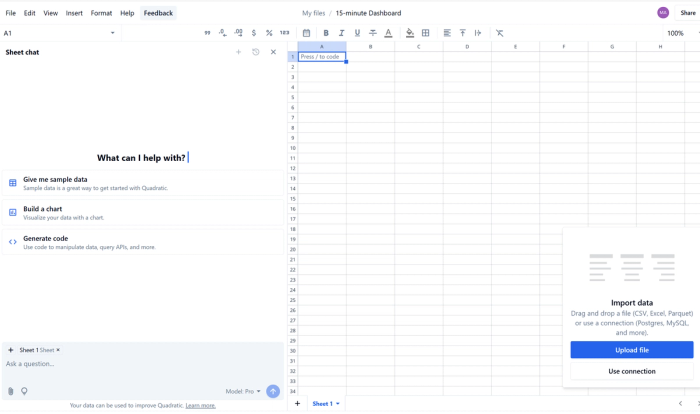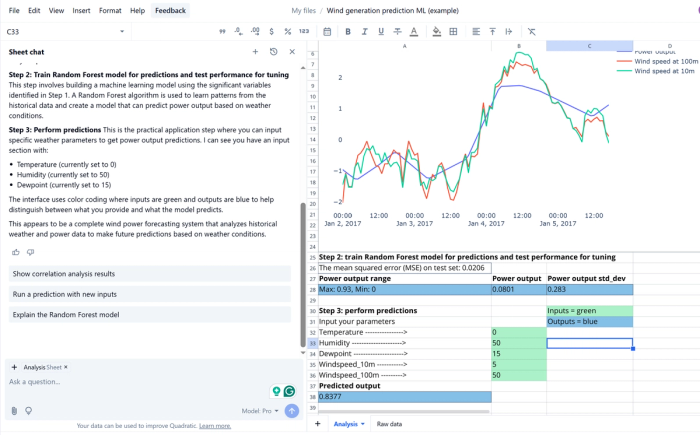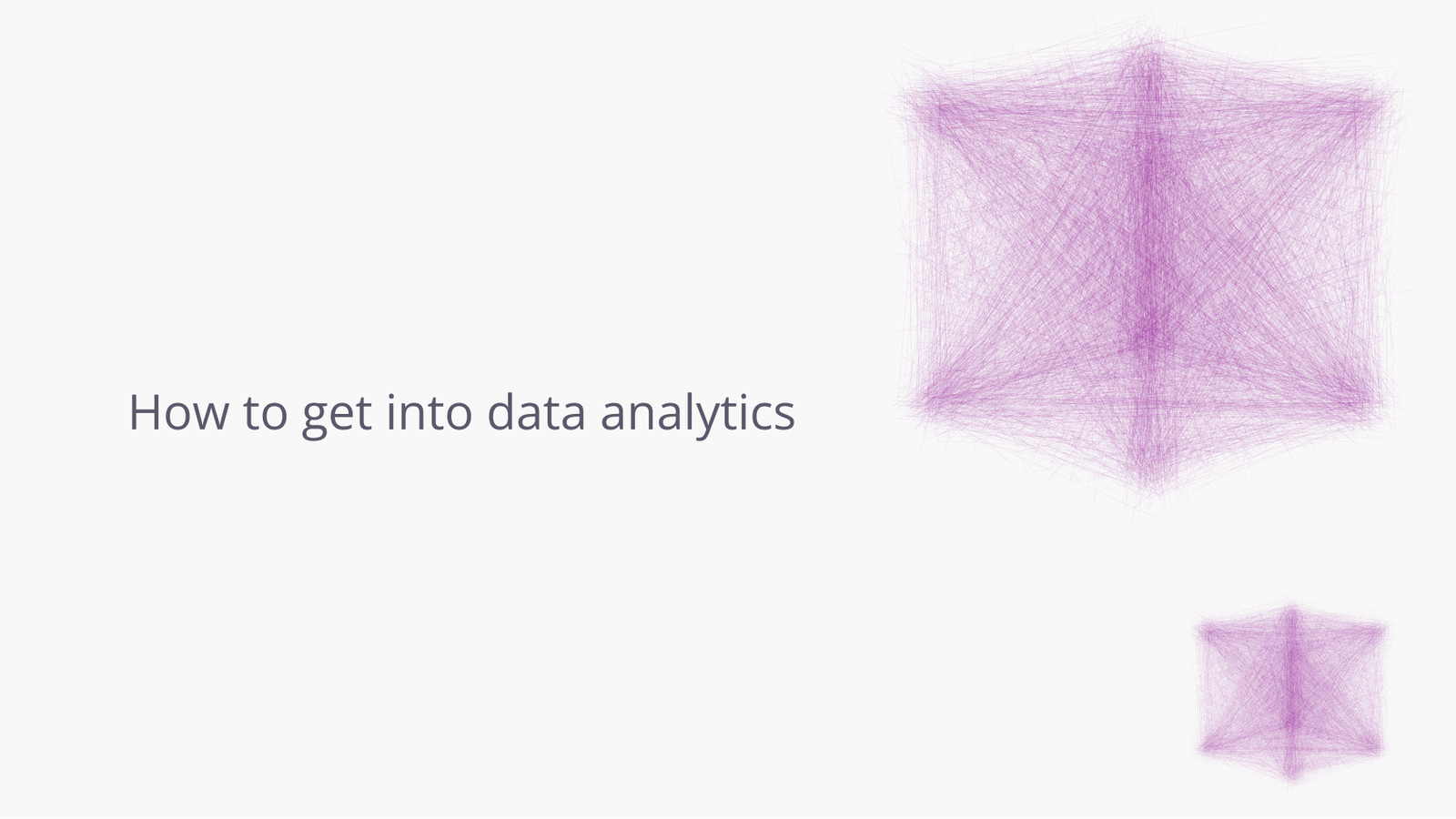MJ Lindeman, PhD, Community Partner
Jul 24, 2025

Table of contents
- Why learning data analytics has never been more accessible
- The three foundational skills that matter most
- How to start learning data analytics with the right resources
- How AI-powered platforms accelerate your learning journey
- Your first analytics project: how to get experience in data analytics
- Making the transition successful
- Why AI represents the future of analytics
- Your immediate next steps
Have you scrolled through Netflix and realized the recommendations are actually what you want to watch? Or noticed your local coffee shop seems to magically have your exact drink ready during the morning rush? These successful predictions are the result of data analysts who work behind the scenes, and they no longer have to be computer programmers.
Consider this example. A marketing manager, who freely admits she "can barely handle Excel formulas," discovered her company's most profitable customers were not who anyone expected. She used natural language queries to an AI, such as "Which customers generate the most profit?" The AI revealed a previously unrecognized customer pattern, and that led to an increase in targeted campaign effectiveness.
This represents something fundamentally different from how to get into data analytics and the traditional career roadmap. Instead of spending months learning programming languages before you can analyze anything meaningful, modern LLM-powered data analysis platforms let you start with questions and get immediate answers. If you're wondering how hard it is to get into data analytics, the answer might surprise you: it's more accessible now than ever before.
Why learning data analytics has never been more accessible
Many people ask, "how hard is data analytics?" An accurate answer depends entirely on your approach. The traditional path was genuinely challenging with months of learning programming syntax before you could analyze your first real dataset. Today's reality tells a different story.
People who change careers to be data analysts succeed because they bring business intuition. When you understand how customers behave or how operations function, you are already thinking analytically. Understanding how to learn data analytics becomes a matter of amplifying this existing knowledge with better tools rather than starting from scratch.
Whether you are a student or changing careers, how to get into data analytics with no experience has become much more straightforward. Modern platforms bridge the experience gap by providing AI assistance that acts as both tool and mentor. You can start analyzing real data immediately while gradually building your technical knowledge.
The three foundational skills that matter most
If you are wondering how to study data analytics effectively, focus on the three must-have skills for data analysts that employers look for in interviews.
Database thinking forms the universal foundation, and it involves data preparation and data analysis. With AI tools for data analysis like Quadratic, you can ask it to tidy up the dataset. You can then ask analysis questions, such as, "Show me customers with revenue over $10,000." The AI generates the complex SQL automatically. What matters is understanding what data exists, how different tables relate to each other, and what questions will yield actionable insights. However, SQL is a core competency you need to learn.
Statistical fundamentals prevent costly analytical mistakes. For example, understand correlation versus causation, sampling bias, and statistical significance. For instance, noticing that ice cream sales correlate with drowning deaths does not mean ice cream causes drowning, although both increase during summer months. Learn statistical reasoning protects you from drawing dangerous conclusions from perfectly accurate data.
Data visualization and communication are great data analytics techniques that transform your analyses into compelling business stories. For example, learn when bar charts work better than line graphs, and why simplicity trumps complexity in executive presentations. Your goal is making the insights you discover immediately actionable for decision-makers.
How to start learning data analytics with the right resources
The abundance of learning options can feel overwhelming when you're trying to learn Python data analytics or figure out where to begin. There are resources that consistently produce job-ready analysts.
Start with Google Data Analytics Professional Certificate on Coursera for comprehensive coverage. The courses span everything from spreadsheet analysis to advanced SQL and basic programming, including hands-on projects using real datasets. This program directly answers how to get a job in data analytics by providing industry-recognized credentials.
Khan Academy's Statistics and Probability course builds essential mathematical foundations without requiring advanced calculus. This resource is perfect for anyone asking how can I improve my data literacy for analytics, as it builds the fundamental reasoning skills that underpin all analytical work.
DataCamp's "Data Analyst with Python" career track offers structured learning for those specifically interested in mastering Python for analytics. The track covers Pandas for data manipulation, NumPy for numerical operations, and Matplotlib for visualization. Their interactive coding environment lets you practice immediately rather than watching passive video lectures.
Kaggle datasets and competitions provide endless opportunities to practice. Start with beginner-friendly challenges that include detailed tutorials, then progress to more complex problems. The community forums provide invaluable exposure to different analytical approaches and professional best practices. Or, download a Kaggle dataset to practice data analysis in Quadratic.
There are many other resources available, ranging from established universities like Harvard to corporations like Microsoft to discussions on Reddit. You can learn in your own way and at your own pace while using tools like Quadratic to practice what you are learning.
How AI-powered platforms accelerate your learning journey
Here's where the game has fundamentally changed. Traditional analytics required you to master multiple disconnected tools. These included Excel for basic analysis, SQL for database queries, and Python for advanced statistics. Each transition meant learning new interfaces and debugging processes.
AI-powered platforms like Quadratic eliminate these artificial boundaries. You start with a familiar spreadsheet as shown in the below image with the AI chat interface on the left. You can use standard spreadsheet operations, and you can use the AI to seamlessly incorporate data and do statistical analyses, including charts and graphs. The AI acts as both tool and teacher, generating examples with code and explaining concepts in real-time.

Consider how this works in practice. You might begin analyzing sales data using basic spreadsheet functions, such as calculating averages and creating simple charts. When you are ready for more sophisticated analysis, you can ask the AI to generate Python code for customer segmentation. The results appear immediately in your familiar spreadsheet format, but now you are working with enterprise-grade analytical capabilities.
The AI assistance goes beyond simple code generation. It explains why certain approaches work better for specific problems, suggests improvements to your methodology, and helps debug issues that would otherwise require extensive research. This creates a learning experience that's both immediate and comprehensive.
Your first analytics project: how to get experience in data analytics
You may ask, "How to get experience in data analytics." Start with a dataset related to something you genuinely care about. This could be local housing markets, sports performance, or business metrics from your current industry. For example, an economist who was recently laid off built a model that analyzed his 10 favorite electronic dance music (EDM) songs. He then used it to search YouTube for new artists he would like.
The question of how to get into data analysis starts practically with your first real project. Begin with descriptive analysis that answers basic questions. What patterns exist in the data? How do different variables relate to each other? Build a portfolio that demonstrates your skills and be able to explain the details.
AI-powered platforms like Quadratic can accelerate your development. Traditional approaches require you to master different tools for each analytical step. With integrated AI assistance, you can perform sophisticated analysis while learning progressively. The image below shows a copy of Quadratic’s template tutorial for machine learning.
The left pane shows part of the AI’s response to the prompt “explain the chart and three steps to me.” It explained the meaning of the chart and its variables, along with the three steps necessary to create the chart and the other information shown in the right-side pane.

The AI can suggest relevant analytical approaches based on your data characteristics, generate starter code for statistical tests, and help create professional visualizations. This allows you to attempt more ambitious projects while building both technical skills and analytical judgment.
Document your entire process thoroughly. Create both technical documentation showing your analytical methodology and executive summaries highlighting key business insights. This demonstrates your ability to communicate with both technical and business stakeholders, and that is a crucial skill in professional settings.
Making the transition successful
Building a compelling portfolio requires strategic project selection. Choose analyses that demonstrate different capabilities, such as data cleaning, statistical analysis, visualization, and business insight generation. Frame projects in business terms: instead of "performed regression analysis," write "identified key factors driving customer retention."
Network actively within the analytics community through professional associations and online forums. Many positions are filled through referrals rather than public postings. Participate in discussions, share your analyses, and build relationships with established professionals.
Prepare thoroughly for interviews, which typically include both technical and behavioral components. Practice explaining your portfolio projects clearly, focusing on business impact rather than just technical details. Be ready to solve analytical problems and discuss your methodology under questioning.
Why AI represents the future of analytics
The integration of artificial intelligence into analytics platforms democratizes access to sophisticated analytical capabilities. Platforms like Quadratic exemplify this evolution. You can start with basic spreadsheet operations and progressively incorporate database queries, statistical modeling, and interactive visualizations. The AI bridges technical gaps while you focus on developing business insight and analytical judgment.
This approach particularly benefits career changers who bring strong domain expertise but limited technical backgrounds. Your ability to ask meaningful questions, understand business context, and interpret results correctly becomes more valuable than pure coding ability.
Your immediate next steps
Start today with a simple analysis of something that interests you, such as personal finances, local market trends, or data from your current role. Use tools that feel comfortable initially, then expand capabilities as confidence grows.
Focus on analytical thinking through practice rather than attempting to master every technique before starting. The field evolves rapidly, making adaptability and learning ability more valuable than encyclopedic technical knowledge.
Connect with the analytics community early. Share your work, ask questions, and learn from others' experiences. Remember that data analytics fundamentally involves solving problems and generating insights that drive better decisions.
With modern AI-powered spreadsheets removing traditional barriers, you can begin this transformation immediately while building expertise progressively. The combination of your existing knowledge, consistent practice, and AI-enhanced tools positions you to make this career transition successfully.




